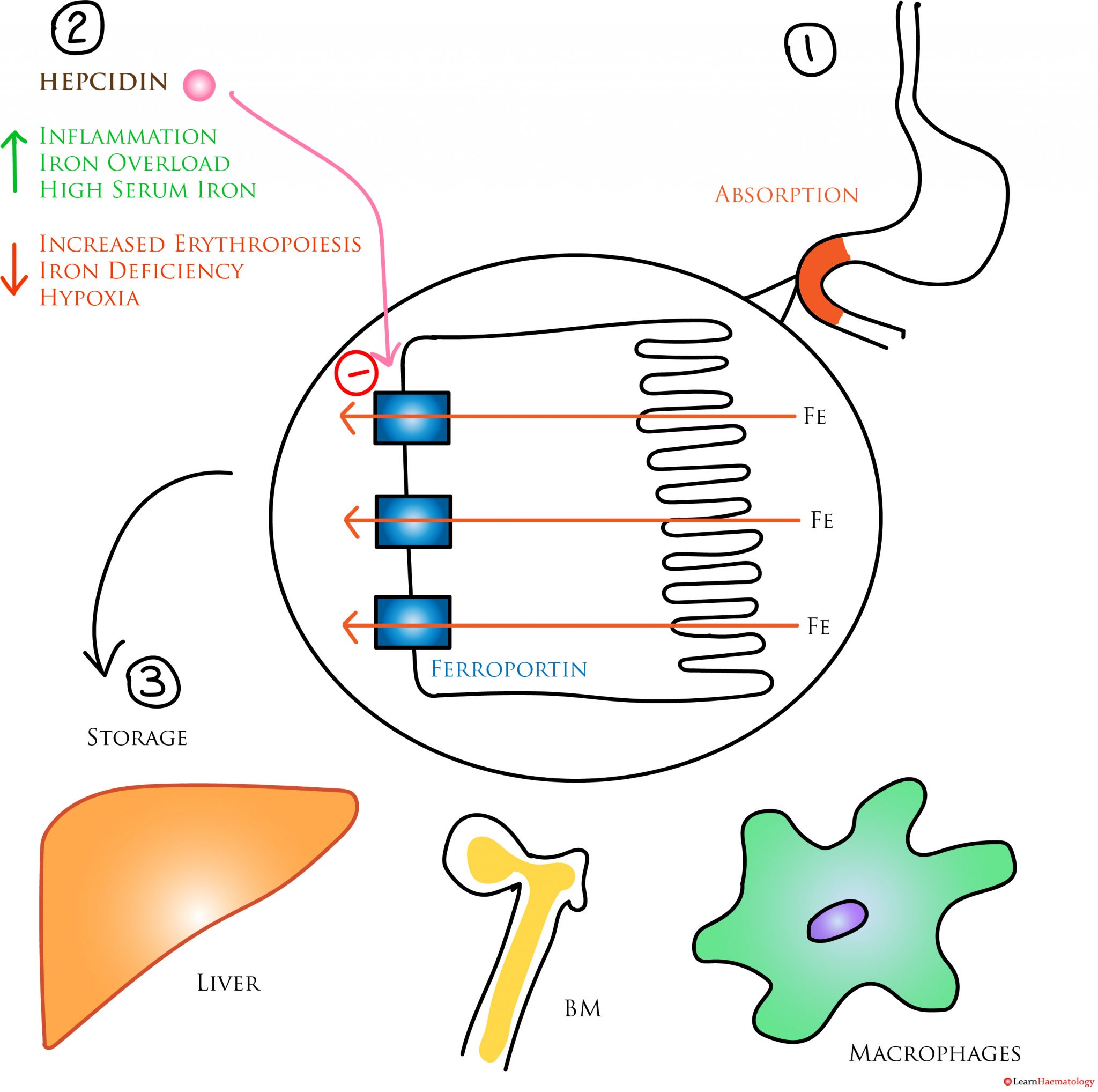Hepcidin is a key regulator of iron homeostasis. It binds to the iron transport protein ferroportin, causing it to be internalised and degraded by cellular lysosomes. Ferroportin is found on enterocytes and all organs which act as iron stores – the liver, bone marrow and splenic macrophages. The action of hepcidin is to reduce enteric iron absorption and promote sequestration in body storage compartments.
Hepcidin levels are dependent on the rate of transcription of the hepcidin gene; transcription rates are increased in inflammatory states, when the serum iron is high and in iron overload. Conversely, transcription rates are decreased in iron deficiency, conditions where there is increased erythropoiesis (such as the iron-loading anaemias) and hypoxia.

Body Iron Distribution. 1. Iron is absorbed in the duodenum via ferroportin. 2. Hepcidin is a regulatory protein which binds to ferroportin, causing it to be degraded by lysosomes. Hepcidin is increased in inflammation, iron overload and in the presence of high serum iron. It is decreased in iron deficiency, increased erythropoiesis and hypoxia. 3. Iron is stored in the liver, bone marrow and splenic macrophages. A significant amount also circulates as haem in haemoglobin.
Serum iron is a key regulator of hepcidin levels under normal conditions. The figure below illustrates how:

Iron Homeostasis. Under normal conditions, serum iron acts as a key regulator of hepcidin transcription. Panel A: increased levels of serum iron increase hepcidin levels, resulting in more hepcidin binding to ferroportin and reducing enteric iron absorption. Panel B: reduced serum iron levels decrease hepcidin transcription rates, resulting in less hepcidin binding to ferroportin and increased enteric iron absorption.


Leave A Comment